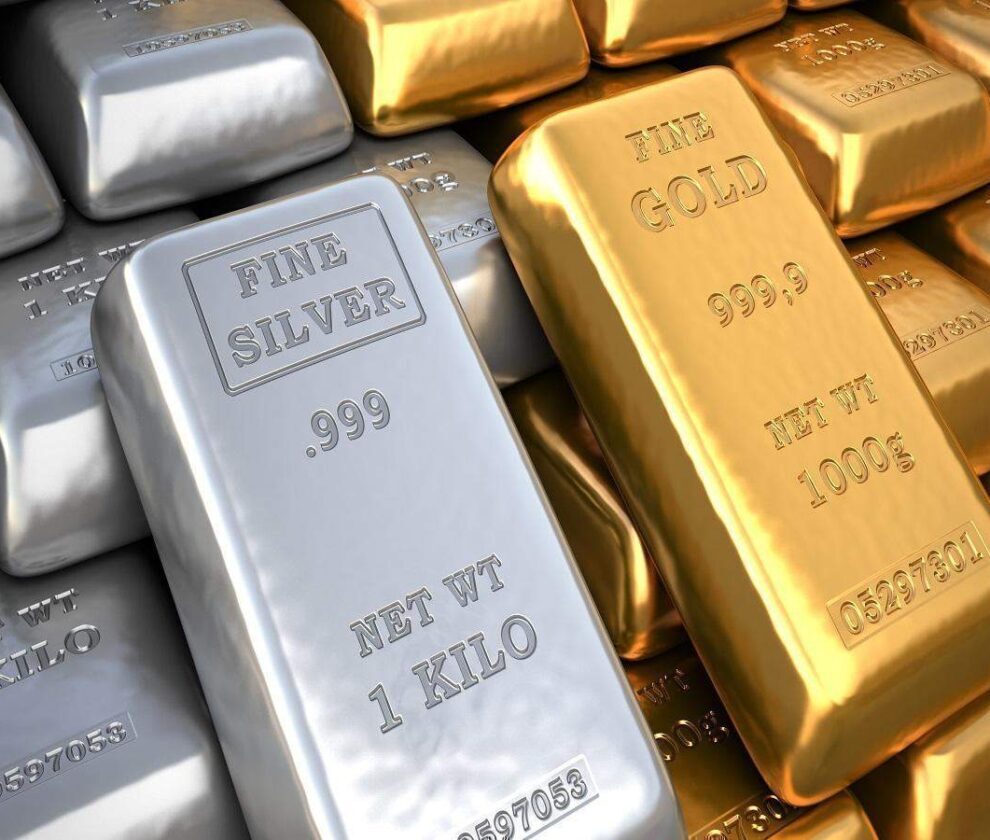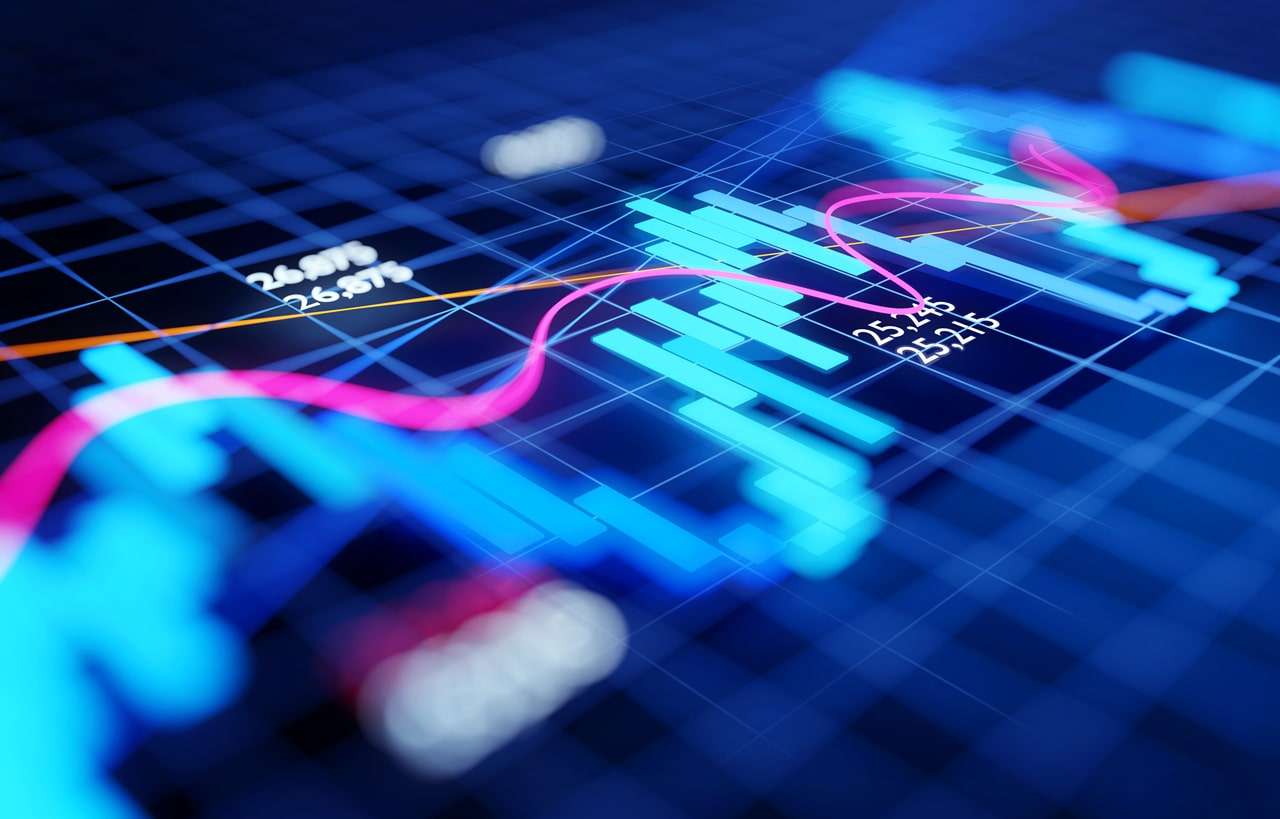Introduction
Gold and silver trading refers to the buying and selling of gold and silver as financial assets in the global market. It involves the speculation on the price movements of gold and silver with the aim of making a profit.
Gold and silver are precious metals that have been valued for centuries due to their rarity, durability, and intrinsic worth. They are widely recognized as stores of value and are often used as a hedge against inflation and economic uncertainties.
In gold and silver trading, investors and traders can participate through various financial instruments such as futures contracts, options, exchange-traded funds (ETFs), and physical ownership of gold and silver bars or coins. These instruments allow individuals to gain exposure to the price movements of gold and silver without physically owning the metals.
Traders in the gold and silver market analyze market trends, economic data, geopolitical events, and other factors that can impact the supply and demand dynamics of these metals. They use technical analysis tools and fundamental analysis to make informed trading decisions.
Gold and silver trading offers opportunities for both short-term speculation and long-term investment. It is influenced by a wide range of factors, including global economic conditions, central bank policies, currency fluctuations, and investor sentiment. The market operates 24 hours a day, enabling traders from around the world to participate.
It is important to note that gold and silver trading involves risks, including price volatility, liquidity risks, and the potential for losses. Therefore, individuals interested in gold and silver trading should conduct thorough research, develop a trading strategy, and consider their risk tolerance before engaging in this market.
What is Gold ?
Gold is a precious metal that has been valued and coveted by civilizations throughout history. It is a chemical element with the symbol Au and atomic number 79. Gold is known for its lustrous yellow color, malleability, and resistance to corrosion, making it highly sought after for various purposes.
Gold has both practical and symbolic significance. It has been used in jewelry and decorative arts for its beauty and rarity. Additionally, gold has served as a store of value and medium of exchange, functioning as currency in many societies. Today, gold continues to hold its status as a reliable store of wealth and a hedge against inflation and economic uncertainties.
In the financial markets, gold is traded as a commodity and an investment asset. It is valued based on its purity and weight, typically measured in troy ounces. Gold prices are influenced by a variety of factors, including supply and demand dynamics, global economic conditions, central bank policies, geopolitical events, and investor sentiment.
Gold mining is the primary source of new gold supply, with major gold-producing countries including China, Australia, Russia, and the United States. Gold is also recycled from various sources, such as old jewelry and electronic devices.
Gold has been associated with wealth, luxury, and prestige for centuries. It holds cultural and symbolic significance in many societies, representing power, prosperity, and longevity. Whether in the form of jewelry, investments, or central bank reserves, gold continues to play a significant role in the global economy and as a tangible asset for individuals and institutions alike.
What is silver ?
Silver is a precious metal that is widely recognized for its white, lustrous appearance. It is a chemical element with the symbol Ag and atomic number 47. Silver has been used for thousands of years for various purposes, including currency, jewelry, and industrial applications.
Like gold, silver has both practical and symbolic value. It is highly malleable and ductile, which means it can be easily shaped into various forms and drawn into wires. Silver is an excellent conductor of electricity and heat, making it valuable in electronics, solar panels, and other technological applications.
In terms of investment, silver is considered a precious metal and is traded as a commodity in the financial markets. It is valued based on its purity and weight, typically measured in troy ounces. Silver prices are influenced by factors such as supply and demand dynamics, industrial demand, economic conditions, geopolitical events, and investor sentiment.
Silver mining is the primary source of new silver supply, with major silver-producing countries including Mexico, Peru, China, and Australia. Additionally, silver can be recycled from various sources, such as photographic film and electronic devices.
Silver has a long history of use as currency and has been used as a medium of exchange in many societies. It is also used in jewelry, silverware, and decorative arts due to its beauty and shine. In recent years, silver has gained attention as an investment asset and a hedge against inflation.
Overall, silver holds both practical and investment value, with its versatile industrial applications and historical significance as a store of wealth.
What is Platinum ?
Platinum is a precious metal that is known for its silvery-white color and lustrous appearance. It is a chemical element with the symbol Pt and atomic number 78. Platinum is a dense and highly malleable metal that is resistant to corrosion, making it highly valued for various applications.
Platinum has a range of uses in different industries. One of its primary applications is in catalytic converters, where it helps to reduce harmful emissions from vehicles. Platinum is also widely used in the jewelry industry, often in its pure form or as an alloy with other metals. It is considered a high-quality and prestigious metal for jewelry design.
In addition to its industrial and jewelry applications, platinum is also traded as a precious metal in the financial markets. It is valued based on its purity and weight, usually measured in troy ounces. Platinum prices are influenced by factors such as supply and demand dynamics, economic conditions, geopolitical events, and investor sentiment.
South Africa is the largest producer of platinum, followed by Russia and Zimbabwe. Platinum is primarily obtained from mining operations and is often found alongside other metals like palladium and rhodium.
Due to its rarity and industrial uses, platinum is considered one of the most valuable precious metals. It has a wide range of applications in various sectors, including automotive, jewelry, electronics, and chemical industries. The unique properties of platinum make it a desirable material for specific applications where its characteristics, such as resistance to heat and corrosion, are highly valued.
What is Palladium ?
Palladium is a rare and lustrous silvery-white metal that belongs to the platinum group of elements. It has the chemical symbol Pad and atomic number 46. Palladium shares many similar properties with other platinum group metals, such as platinum, rhodium, ruthenium, iridium, and osmium.
Palladium has a range of applications across various industries. One of its primary uses is in catalytic converters, where it helps to reduce harmful emissions from vehicles. Palladium is also used in the electronics industry, particularly in the production of capacitors, fuel cells, and various electronic components. It is valued for its excellent electrical conductivity and resistance to corrosion.
Additionally, palladium is highly sought after in the jewelry industry, where it is used as an alternative to white gold or platinum. Its natural white color and lustrous appearance make it an attractive choice for jewelry design.
From an investment perspective, palladium is traded as a precious metal in the financial markets. It is valued based on its purity and weight, typically measured in troy ounces. Palladium prices are influenced by factors such as supply and demand dynamics, economic conditions, geopolitical events, and investor sentiment.
Russia is the largest producer of palladium, followed by South Africa and Canada. Palladium is primarily obtained as a byproduct of mining operations for other metals, such as platinum and nickel.
Due to its rarity and increasing demand, palladium has become a valuable and sought-after metal in recent years. Its unique properties, particularly its effectiveness as a catalyst and its usage in the automotive industry, have contributed to its growing importance and value.
How are precious metals traded?
- Digital Precious Metal Exchanges: Digital exchanges allow investors to trade precious metals electronically. These platforms connect buyers and sellers and facilitate transactions. Users can place buy or sell orders at current market prices, and the exchange matches the orders accordingly. Digital exchanges often provide advanced trading features, such as limit orders, stop-loss orders, and market analysis tools.
- Mobile Trading Apps: Many brokerage firms and financial institutions offer mobile apps that allow users to trade precious metals directly from their smartphones or tablets. These apps provide a user-friendly interface, real-time market data, and trading functionalities. Users can monitor prices, execute trades, and manage their precious metals investments conveniently on the go.
- Spot Market: The spot market is where precious metals are bought and sold for immediate delivery. In this market, the price of the metal is determined based on current market conditions, such as supply and demand. Spot trading allows for quick transactions and is commonly used by traders and investors.
- Futures Contracts: Futures contracts are agreements to buy or sell precious metals at a predetermined price on a future date. These contracts are traded on commodity exchanges and allow investors to speculate on the future price movements of precious metals. Futures contracts provide an opportunity for hedging and price discovery.
- Exchange-Traded Funds (ETFs): Precious metal ETFs are investment vehicles that track the price of specific precious metals or a basket of precious metals. These ETFs are traded on stock exchanges, and investors can buy or sell shares representing ownership in the underlying precious metals. ETFs offer a convenient way for investors to gain exposure to precious metals without physically owning and storing them.
- Physical Bullion: Investors can also buy and sell physical precious metals in the form of bars, coins, or other forms of bullion. This involves purchasing the metal from a dealer or broker and taking physical possession or storing it in a secure location. Physical bullion allows for direct ownership of the metal and can be held as a long-term investment or used as a hedge against inflation.
- Options and Derivatives: Options and derivatives are financial instruments that derive their value from the underlying price of precious metals. They provide investors with the right, but not the obligation, to buy or sell precious metals at a predetermined price within a specific time frame. Options and derivatives offer flexibility and can be used for hedging or speculative purposes.
It’s important to note that the availability and accessibility of these trading methods may vary depending on the country and the specific regulations governing precious metals trading in that jurisdiction. Additionally, trading in precious metals carries risks, and individuals should conduct thorough research and seek professional advice before engaging in such activities.
What drives precious metal market ?
Several factors drive precious metal markets, influencing their prices and market dynamics. Here are some key drivers:
- Supply and Demand: The balance between the supply of and demand for precious metals plays a significant role in price movements. Factors affecting supply include mining production, recycling, and central bank reserves. Demand is influenced by various industries such as jewelry, electronics, automotive, and investment demand from individuals, institutions, and governments.
- Economic Factors: Economic conditions, including interest rates, inflation, and overall market sentiment, have a substantial impact on precious metal prices. For example, during periods of economic uncertainty or inflationary pressures, investors tend to seek the safe-haven qualities of precious metals, leading to increased demand and potentially higher prices.
- Currency Movements: Precious metal prices are often influenced by currency fluctuations. Since most metals are priced in U.S. dollars, changes in the value of the dollar can affect their prices. A weaker dollar typically makes precious metals relatively more attractive to international investors and can contribute to price appreciation.
- Geopolitical Events: Geopolitical factors such as political instability, trade tensions, conflicts, and regulatory changes can impact precious metal markets. These events can create uncertainty and drive investors towards the perceived safety of precious metals, leading to increased demand.
- Central Bank Policies: Actions and policies of central banks, particularly in relation to interest rates and monetary stimulus, can influence precious metal prices. For instance, when central banks implement loose monetary policies or engage in quantitative easing, it can create inflationary concerns and drive investors towards precious metals.
- Investor Sentiment: Investor sentiment and market psychology play a crucial role in determining precious metal prices. Fear, uncertainty, and market speculation can lead to increased buying or selling activity, impacting prices. Additionally, investor sentiment towards financial markets, equities, and other asset classes can influence the demand for precious metals as alternative investments.
It’s important to note that these factors are interconnected and can interact in complex ways, leading to fluctuations in precious metal markets. Traders and investors closely monitor these drivers and analyze market trends to make informed decisions.
How can you profit from precious metal trading?
Spot trading involves buying and selling precious metals at the current market price. Traders aim to capitalize on short-term price fluctuations by buying low and selling high. This can be done through online platforms or physical marketplaces.
Futures and options contracts allow traders to speculate on the future price of precious metals without owning the physical metal. By taking long (buy) or short (sell) positions, traders can profit from price movements. However, trading futures and options requires knowledge and expertise due to their complexity.
Exchange-traded funds (ETFs) and mutual funds focused on precious metals provide investors with exposure to the market without directly owning the metal. These funds pool investors’ money and invest in a diversified portfolio of precious metal assets. Profits can be earned through price appreciation and dividends, but it’s important to consider fees and expenses.
Some investors prefer owning physical precious metals like gold and silver coins or bars. They can potentially profit by holding onto these assets and selling them at a higher price when market conditions are favorable. However, physical ownership also involves storage and security considerations.
Investing in mining companies involved in the extraction and production of precious metals can be another way to profit. Mining stocks’ value can rise or fall based on factors such as company performance, exploration success, and the price of precious metals. Careful research and analysis are necessary to select promising mining stocks
Precious metals are often considered a hedge against inflation and a store of value. By holding onto precious metals over the long term, investors aim to protect their wealth and potentially benefit from price appreciation over time.
It’s important to note that trading and investing in precious metals carry risks, including price volatility and market uncertainties. It’s advisable to conduct thorough research, understand market trends, and consider consulting with financial professionals before engaging in precious metal trading for potential profits.





